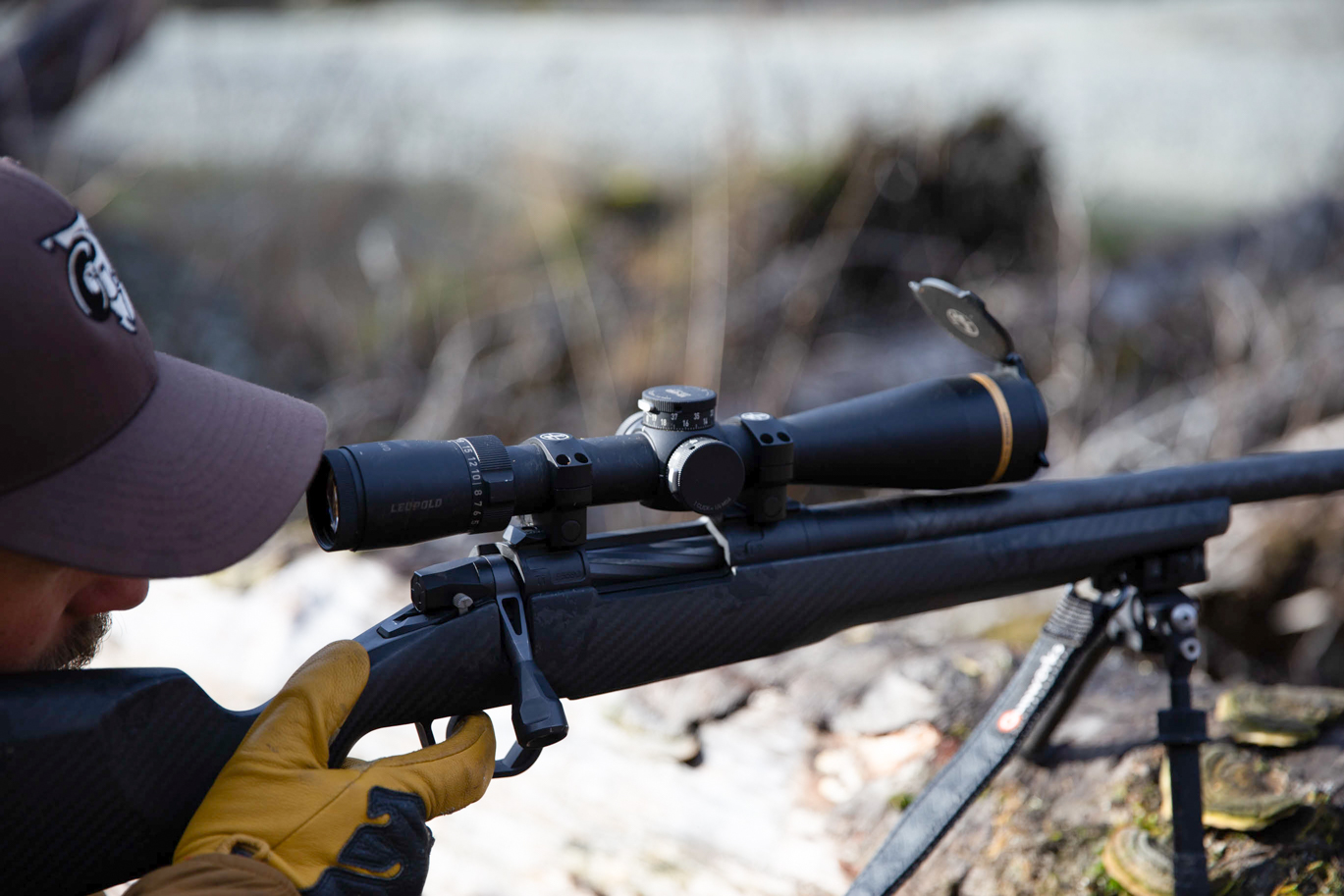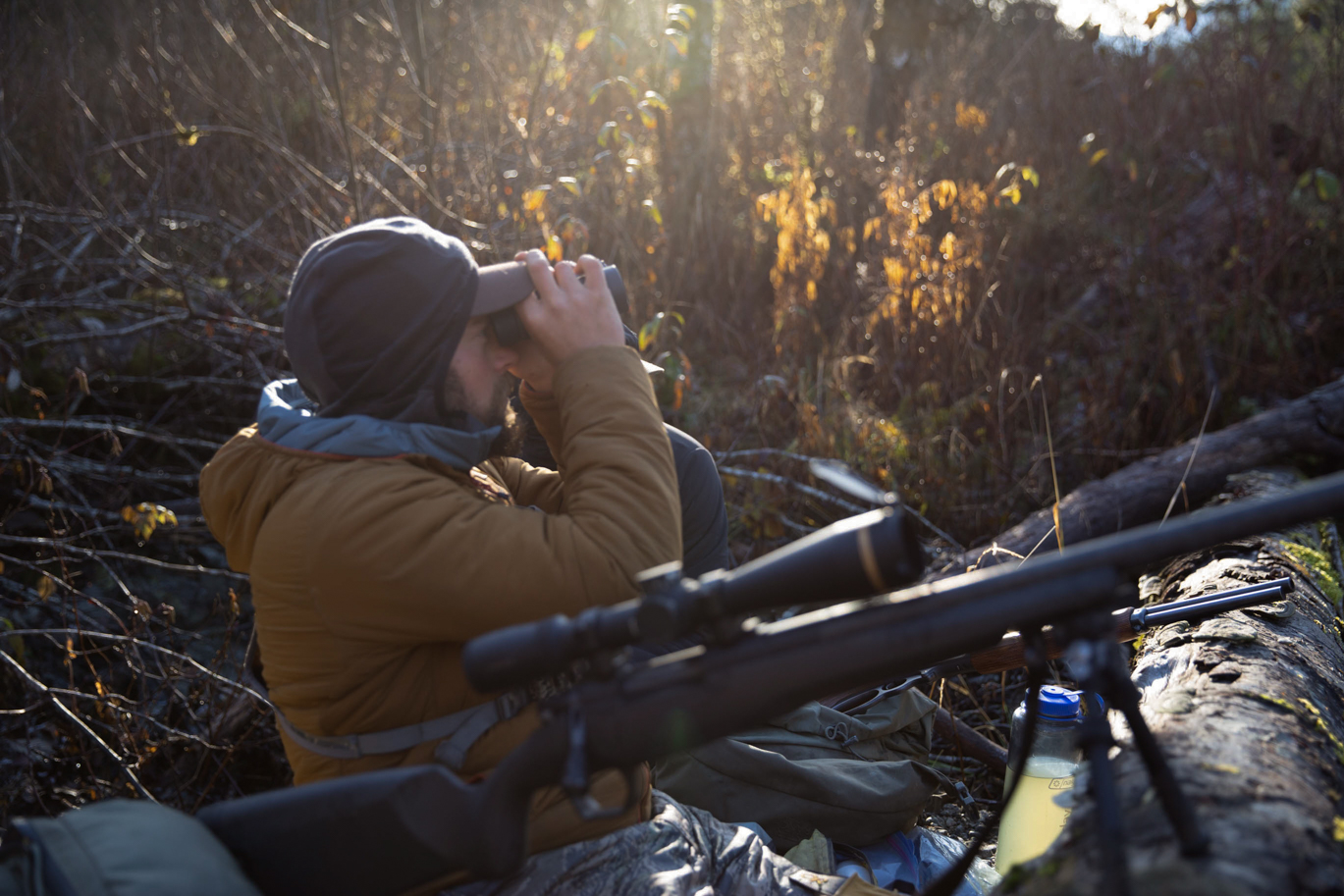Two years ago, I had my first hands-on introduction to the world of the .264, via the sleek and new-at-the-time 6.5 PRC. I was in Madras, Oregon at the Leupold Optics Academy with Adam Janke, doing a precision course to prepare for an upcoming mountain goat hunt that February. Housed in a compact Gunwerks Clymr platform, it should come as no surprise that it was a dream to shoot. Minimal recoil, a beautiful trigger, and a stock with unrivalled ergonomics in the light mountain rifle category. Mix that with the high ballistic coefficient of the sleek 6.5mm projectiles and you have a recipe for fun. That winter and spring I spent quite a bit of time behind the 6.5 PRC, as well as taking a mountain goat on the north coast of B.C that February.
Up until that point, most of my hunting had been done with the 308 Win and later a lightweight 300 WSM, mixed in with the 338 win mag I carry while guiding. I’ve nothing against smaller calibres, nor did I have any particular affinity to the 30 cal’s, it just happened that way. Over the course of the next year, I continued to shoot and hunt with the 6.5 PRC, as well as writing an article “6.5 PRC – The King of the Mountain?” covering some of the details of it. Given the popularity of the 6.5 Creedmoor, and the 6.5 PRC’s place as its bigger sibling, it is no surprise then that the 6.5 PRC has grown ever more popular. To date, an increasing number of manufacturers have picked it up as an offering in various rifle platforms and price points, and that article is one of our most-read every single week.

Photo: Peter Gutsche
Despite how impressed I was with the 6.5 PRC while shooting and hunting with it, I still wasn’t 100% convinced it would end up in my gun safe, for a couple of reasons. The first being that Canada simply doesn’t have the ammunition availability that the United States does, and the second that I felt it was a little light to give the versatility I was looking for. Ammo availability is the biggest factor that influences a rounds popularity in the general hunting space, and when I first borrowed Adam’s rifle my calls to hunting stores around Canada looking for 6.5 PRC ammo were met with silence… At that point, most people hadn’t heard of it, and nobody had any to sell.
Given that the majority of my hunting season is spent guiding, having multiple high end hunting rifles for more specialized pursuits didn’t make sense to me practically, or financially.
I was, however, convinced by its efficient design that a flat shooting, low recoiling calibre was something I needed. At this point, I was hunting with a 7lb scoped 300 WSM, and while recoil was quite tolerable, it was sharp enough to impede any serious volume of shooting. I had become more interested in extending my ethical range and getting more out of my rifles and wanted something a little more comfortable to spend time behind. Away went the 300wsm, and I landed on a featherweight 280 Ackley topped with a Leupold VX5HD 3-15 with a standard MOA dial. That one saw use on a mule deer, whitetail, mountain goat, and black bear over the course of the year, at distances between five yards and 519 yards. It proved mild recoiling enough to allow enough time behind it to be comfortable shooting targets out to 750yds in realistic field shooting positions, with variable wind, and factory ammo to boot. Suffice it to say, in the last year, I have developed some strong feelings for the slender rounds under 30 calibre.

Photo: Peter Gutsche
Late this spring saw me ordering a Gunwerks Clymr of my own. I hummed and hawed for a while on calibre. Given the quality of a build like this, it was a rifle I was hoping to use for a wide variety of hunting, and I didn’t see myself buying a second any time soon. Initially, I had settled on a 7mm Rem Mag as it felt like an honourable nod to bridging the gap between my 280 Ackley and the 338 Win Mag. When the opportunity for the same build I’d ordered — 22” Proof barrel, Ti action, Carbon stock — in a 6.5 PRC came up without having to wait the standard 120-day lead time, I jumped at the opportunity to get a rifle in my hands for the upcoming fall.
It was a round I was already familiar with, and in the year and a half since we first became acquainted, it had gained enough popularity that most of the quality — read not big box — shops carried factory ammo for it. Currently, in Canada, Hornady and Gunwerks are the only factory ammo offerings, with the former offering loads featuring the ELD-X & ELD-M projectiles, and the Gunwerks load featuring the ELD-M exclusively. Currently, things are a little limited in factory bullet offerings, but I think that will be changing soon with some other ammunition manufacturers entering the mix.
So this fall I found myself, somewhat unexpectedly, behind a 6.5 PRC housed in a Gunwerks platform. This time around questioning its versatility as an all-around option for hunting in British Columbia. The majority of my personal hunting revolves around medium-sized game. Black Bear, Mule Deer, Blacktails, Whitetails, Mountain Goats, and maybe a bighorn sheep in the future if I ever find the time to chase them. I’d say the 6.5 PRC is about perfect for this type of game, but how about Elk or Moose? I was a little skeptical.
It was brought to my attention one day — from a fellow 6.5 PRC owner whose opinion on all things ballistic I trust — that at practical hunting ranges the 6.5 PRC essentially duplicates 270 Winchester performance. I consider practical hunting ranges to be inside of 500 yards, as that’s where the majority of my own shots occur. Despite my previous comparisons between the PRC and other cartridges, I had overlooked that fact. I’d been focused on its trajectory, wind deflection, and energy downrange – – which is truly where the PRC shines.
Now to some, comparing it to the 270 Winchester may sound slanderous, and it’s certainly not a calibre that generates much excitement these days, but the truth is it’s effective. If you don’t believe me, you can consult the ballistic charts. Moose, Elk, and everything smaller, the 270 has been there and done it, and done it well. And so too can the 6.5 PRC, especially when paired with appropriate bullets. As most of us won’t be taking shots over 600 yards on game, shooting Hornady’s ELD-M, as I currently am, may act as more of a hindrance to performance than a help. It all depends on what kind of performance you are after.
This November, I was fortunate enough to connect on a great Roosevelt Elk on British Columbia’s south coast, with the 6.5 PRC loaded with 147gr ELD-M. While I ended up shooting it a little higher up than I’d have preferred at a much closer range than anticipated, the bullet did create considerable tissue damage, and with some of it exiting the offside of the bull. I did experience some jacket – core separation, although that isn’t unexpected with a bullet of this sort under 80 yards. Needless to say, at this point, I am convinced of its place in my gun safe.

Photo: Peter Gutsche
For practical hunting ranges and paired with a Nosler Accubond, or the Barnes LRX the PRC gives you an efficient, effective hunting cartridge that is flat enough for long bombs, and easy enough on the shoulder that you can put the time in to make those shots count. Alternatively, I am sure you could find loads with a similar point of impact for sub 300 yards and run the factory ELD-M for anything over.
So is the 6.5 PRC really the King of the Mountain, as I cheekily suggested 18 months ago? Perhaps not, but it certainly holds its own in the mountains, and does so with a little bit of style.


